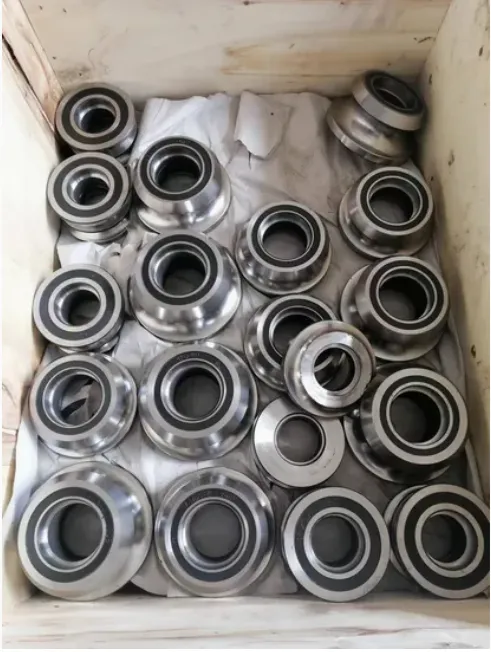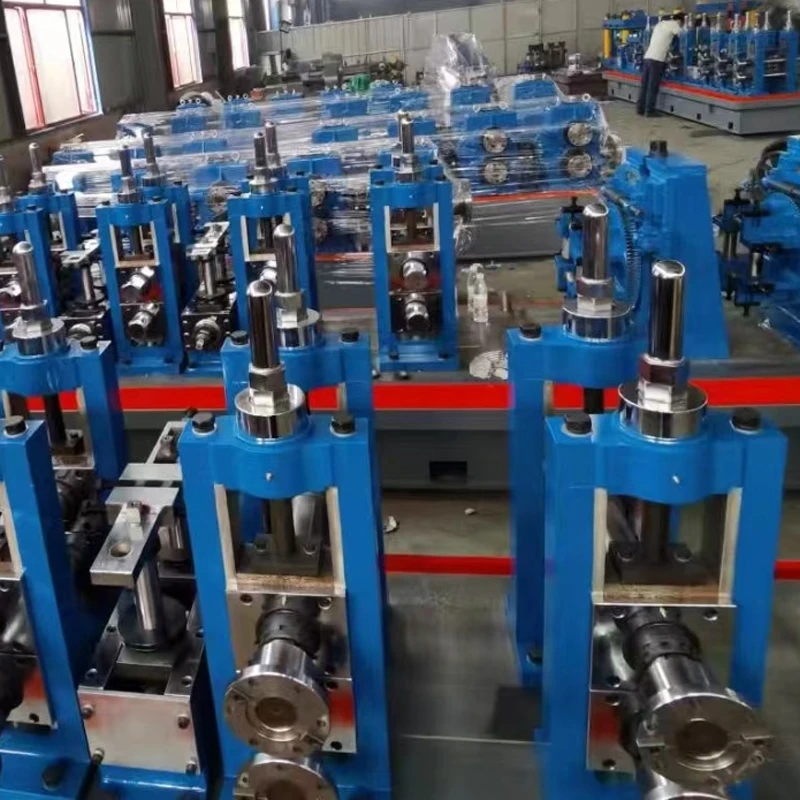Feb . 05, 2025 04:40
Back to list
Cold Cutting Flying Saw
In the fast-paced world of metal processing, efficiency and precision are paramount. Enter the decoiler, an indispensable piece of machinery that plays a vital role in the production line. A decoiler, known for its simplicity and effectiveness, is engineered to uncoil metal sheets, preparing them for further processing tasks such as cutting, bending, and stamping. This article delves into the essentials of decoilers, shedding light on their functionality, types, and benefits, and explains why they are a cornerstone in the manufacturing industry.
The benefits of incorporating a decoiler into a production line extend beyond mere operational efficiency. They also enhance the quality of the final product. Proper tension and handling during the decoiling process prevent unwanted stress and strain on the metal sheets, which can lead to defects in the final product. This precision ensures that components fit together seamlessly during assembly, reducing the likelihood of errors and inconsistencies. Moreover, decoilers contribute significantly to cost reduction. By minimizing material waste and optimizing the flow of metal through the production line, they lower the overall production costs. This efficiency, in turn, allows manufacturers to offer competitive pricing, a critical factor in a highly competitive market. For businesses looking to invest in a decoiler, understanding the specific requirements of their production line is crucial. The choice between a manual, motorized, hydraulic, or automatic decoiler should be based on factors such as the volume of production, the type of metal used, and the budget. Moreover, working with reputable manufacturers and suppliers who offer quality assurance and after-sales support can enhance operational longevity and reliability. With the continuous advancements in technology, the future of decoilers looks promising. Innovations such as the integration of smart sensors and artificial intelligence are set to revolutionize the efficiency and adaptability of decoilers. These advancements will not only improve operational performance but also expand the capabilities of decoilers, allowing them to handle a wider range of materials and complexities. Decoilers are not just machines; they are a pivotal component of modern manufacturing processes. Their ability to streamline operations, enhance product quality, and reduce costs makes them indispensable in today’s industrial landscape. As industries evolve, the role of decoilers will only grow in importance, driving innovation and excellence in metal processing. Investing in a decoiler is not just an acquisition; it’s a strategic step toward achieving higher productivity and setting benchmarks in quality.


The benefits of incorporating a decoiler into a production line extend beyond mere operational efficiency. They also enhance the quality of the final product. Proper tension and handling during the decoiling process prevent unwanted stress and strain on the metal sheets, which can lead to defects in the final product. This precision ensures that components fit together seamlessly during assembly, reducing the likelihood of errors and inconsistencies. Moreover, decoilers contribute significantly to cost reduction. By minimizing material waste and optimizing the flow of metal through the production line, they lower the overall production costs. This efficiency, in turn, allows manufacturers to offer competitive pricing, a critical factor in a highly competitive market. For businesses looking to invest in a decoiler, understanding the specific requirements of their production line is crucial. The choice between a manual, motorized, hydraulic, or automatic decoiler should be based on factors such as the volume of production, the type of metal used, and the budget. Moreover, working with reputable manufacturers and suppliers who offer quality assurance and after-sales support can enhance operational longevity and reliability. With the continuous advancements in technology, the future of decoilers looks promising. Innovations such as the integration of smart sensors and artificial intelligence are set to revolutionize the efficiency and adaptability of decoilers. These advancements will not only improve operational performance but also expand the capabilities of decoilers, allowing them to handle a wider range of materials and complexities. Decoilers are not just machines; they are a pivotal component of modern manufacturing processes. Their ability to streamline operations, enhance product quality, and reduce costs makes them indispensable in today’s industrial landscape. As industries evolve, the role of decoilers will only grow in importance, driving innovation and excellence in metal processing. Investing in a decoiler is not just an acquisition; it’s a strategic step toward achieving higher productivity and setting benchmarks in quality.
Prev:
Next:
Latest news
-
High Frequency Straight Seam Welded Pipe Production Line-BzZhou Xinghua Machinery Equipment Manufacturing Co., LTD.|line pipe steel&welded gas pipeNewsJul.30,2025
-
High Frequency Straight Seam Welded Pipe Production Line-BzZhou Xinghua Machinery Equipment Manufacturing Co., LTD.|High Precision&Automated SolutionsNewsJul.30,2025
-
High Frequency Straight Seam Welded Pipe Production Line - BzZhou Xinghua Machinery Equipment Manufacturing Co., Ltd.NewsJul.30,2025
-
High Frequency Straight Seam Welded Pipe Production Line-BzZhou Xinghua Machinery Equipment Manufacturing Co., LTD.|Precision Welding, High EfficiencyNewsJul.30,2025
-
High Frequency Straight Seam Welded Pipe Production Line|BzZhou Xinghua|Precision Welding&EfficiencyNewsJul.30,2025
-
High Frequency Straight Seam Welded Pipe Production Line - BzZhou Xinghua|Precision Engineering&EfficiencyNewsJul.30,2025


